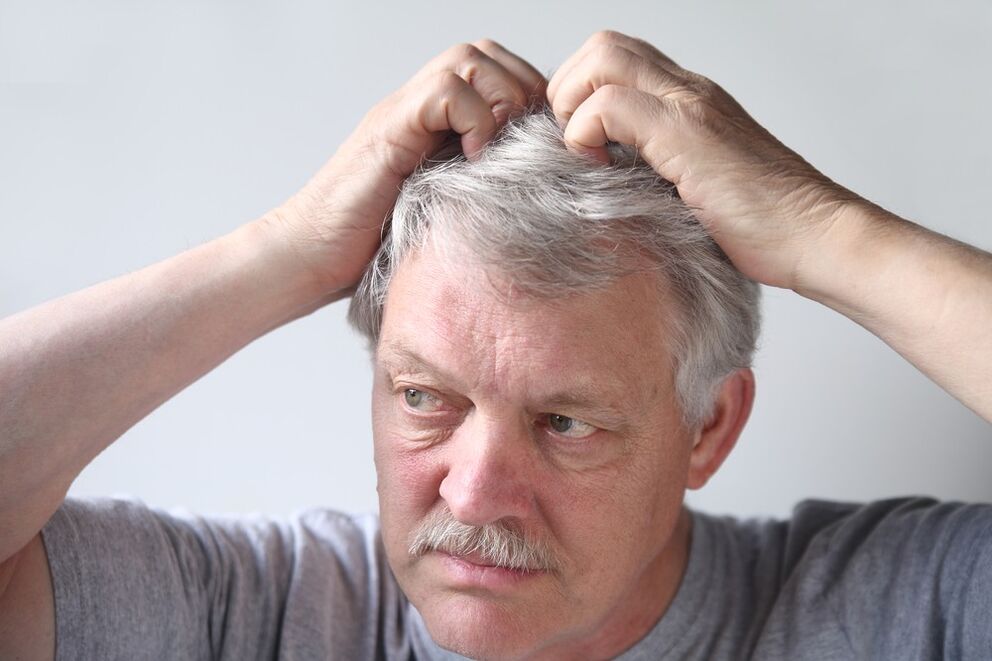
It can occur at any age, but the first symptoms usually appear gradually between the ages of 15 and 35.
The infection can be very bothersome due to the ugly spots all over the body which also causes discomfort and sometimes even pain. The manifestation can be of different degrees: from a few spots with scales that resemble dandruff, to large areas of skin with a rash. Most often, psoriasis develops on the elbows, knees, waist, and head. Pitting or other irregularities may appear on the nails. The rash can show up in a number of ways, including pustules, skin tears, itching, and scratched areas. Psoriasis is not contagious.
Signs and symptoms
- Dry red patches on the skin, covered with silvery scales.
- Small smooth dots (more common in children) all over the body.
- Ligaments swollen and strained.
Warning signs and symptoms
Redness and hair loss all over the skin.
Psoriasis is a common skin condition that affects the life cycle of cells. It usually takes about a month for new cells to emerge from the lower layer of the skin, where they form. Outside, they die and are separated by tiny particles. With psoriasis, this whole process takes place in a few days: the cells die quickly, and patches covered with a thick, hairless crust spread over the skin.
Arthritis accompanies psoriasis in one in ten cases. For most of these people, the effects of psoriatic arthritis are minimal. Some pain is felt in the affected joints, but it has no effect on the health of the whole body. This pain rarely limits mobility similar to that experienced with rheumatoid arthritis.
Causes
In psoriasis, the skin cells reproduce quickly to form a thick, less cohesive layer of skin. This usually does not happen until after treatment begins.
Factors that can cause psoriasis:
- Systemic disease (such as tonsillitis).
- The response of the immune system to disease.
- Damage to the skin.
- Reaction to a drug or vaccine.
- Stress.
- Excessive consumption of alcohol.
- Environmental factors such as direct contact with sunlight or chemicals (disinfectants, paints).
Doctors suggest that psoriasis is a disease caused by many factors and is inherited. But scientists have yet to fully understand how much it is associated with the genetic apparatus.
Diagnostic
The diagnosis of psoriasis is usually made on the basis of a physical examination. The doctor may need a sample of skin cells for analysis to determine the nature of the disorder and the possibility of fungal infections.
Processing
Psoriasis is very difficult to control for one reason: There are a large number of types of psoriasis by type, severity, and responsiveness to treatment. Each of them has its own characteristics, and each requires a special approach, so the doctor needs to deal with each individual case for a long time. The goal of treatment is to regulate the growth and maturation of your skin cells. For mild cases, moisturizing soaps, shampoos, lotions and ointments will suffice.
The treatment can be carried out with:
Creams and ointments
Calcipotriene ointment containing vitamin D is usually prescribed. Calciporium controls the excess production of skin cells. This is a medication for mild to moderate psoriasis. Another option is treatment with retinoids like tazarotene. The doctor may also prescribe drugs containing a norcoticosteroid and a resin.
Preparations for external administration
A second generation retinoid may help slow the growth of skin cells in severe psoriasis. Great care should be taken while treating with this medicine as it can cause side effects such as eye and lip irritation, hair loss, excessive sensitivity to the sun and complicate childbirth if taken bya pregnant woman.
Another is a drug from the group of antimetabolites, which stops the growth of skin cells in psoriasis, and a drug that blocks the immune system. These drugs can also cause side effects, including kidney and liver damage, and are usually only used in the most severe cases.
Phototherapy
Psoriasis ointment combined with ultraviolet A (PUVA), a combination of photosensitive drugs, ultraviolet A (UVA) together suppress the growth of skin cells in some cases of psoriasis. But long-term PUVA treatment (250 times or more) can increase the risk of skin cancer, including melanoma, a potentially fatal form of skin cancer. Sunbathing in hot sun (taking into account that all measures have been taken to avoid burns) and the use of coal tar with ultraviolet B rays (Heckermann's method) are also effective treatment methods. . A new form of light therapy called "narrowband ultraviolet B" (NB-UVF) can be as effective as PUVA and does not require medication before each session. He does not develop a propensity for skin cancer like PUVA does.
Personal care
To keep your disease under control, you need to:
- Eat foods fortified with vitamins, get the amount of rest the body needs, and exercise regularly.
- Maintain a healthy weight. Psoriasis often appears in the folds of the skin in obese people.
- Do not rub or scratch the areas with psoriatic lesions.
- Wash daily to exfoliate dead cells. Avoid hot water or harsh soap.
- Moisturize the skin. Pat the skin after a bath, apply an oily moisturizer immediately after the procedure, while the skin still contains a lot of moisture. Do not use lotions or creams that contain alcohol. Use an air conditioner and keep the room temperature cool at all times.
- Use soaps, shampoos, and ointments that contain liquid carbon tar and salicylic acid.
- Sunbathe in moderation, but avoid sunburn.
- When the symptoms of the disease are extremely pronounced, use a cream containing 0. 5-1% cortisone for several weeks.























